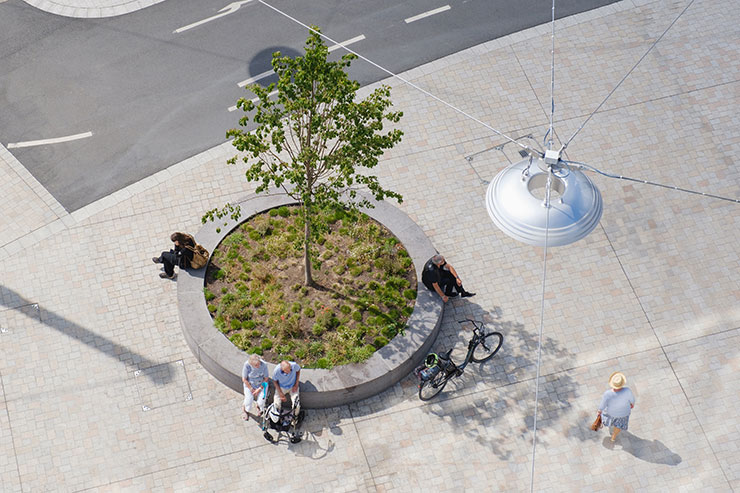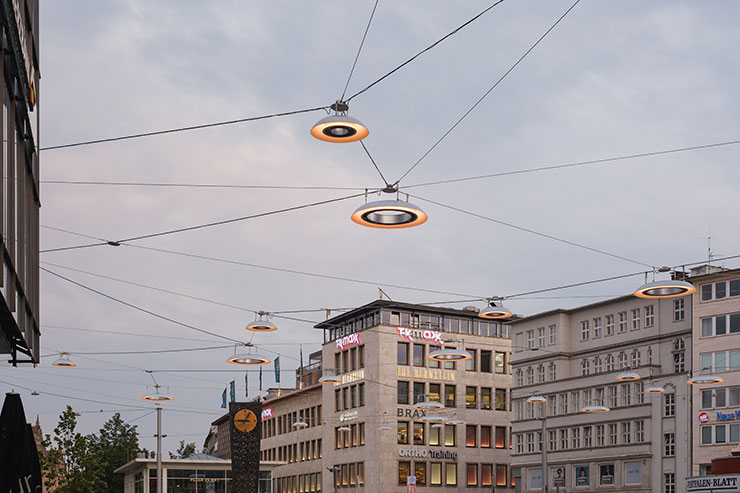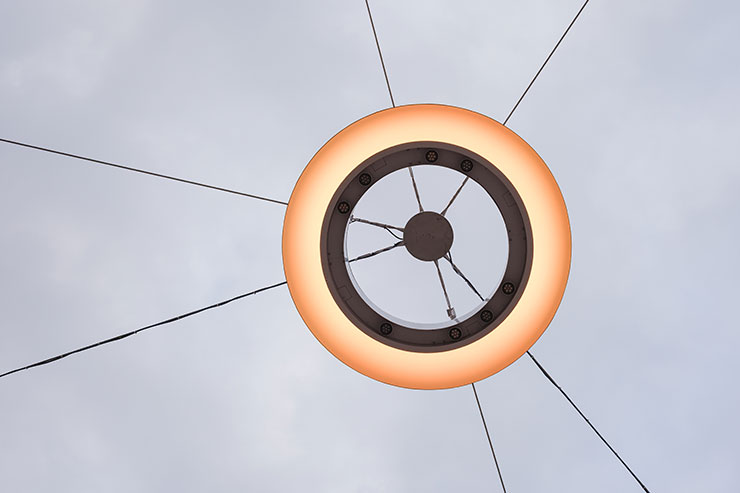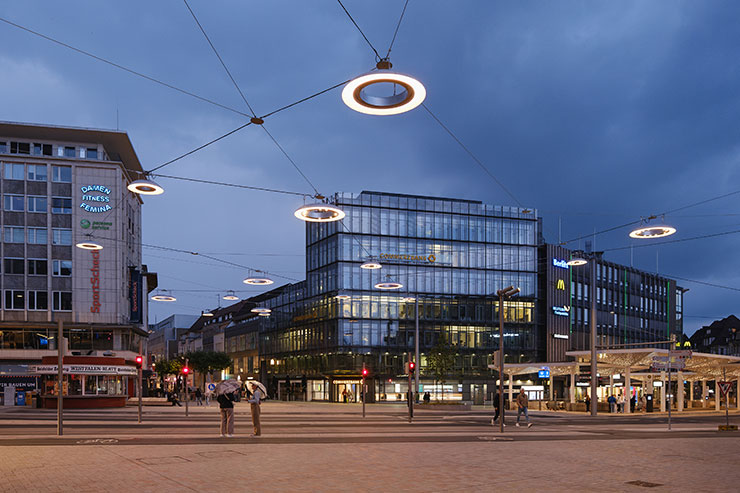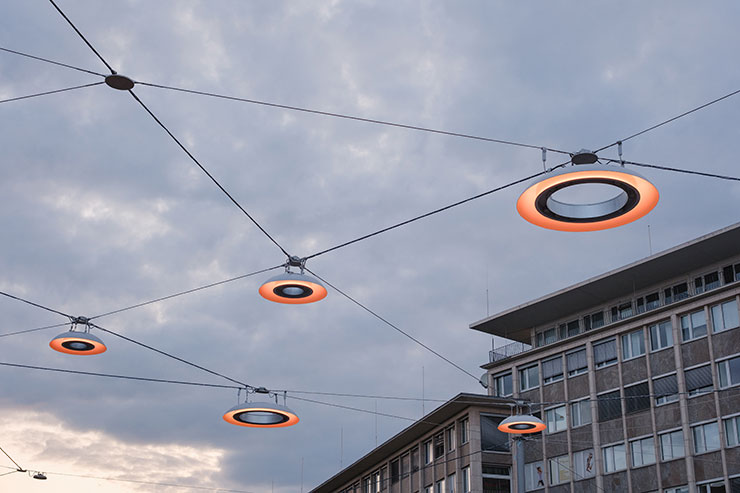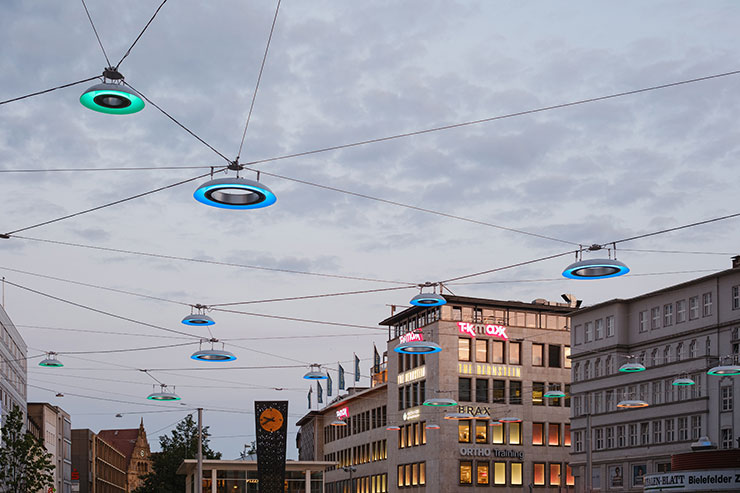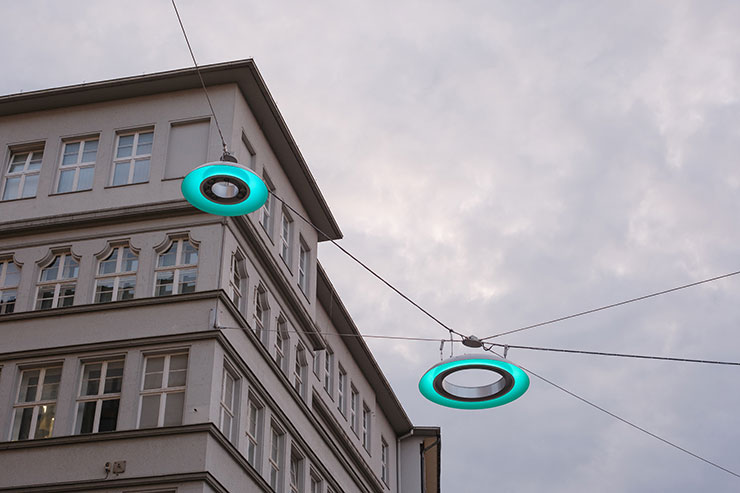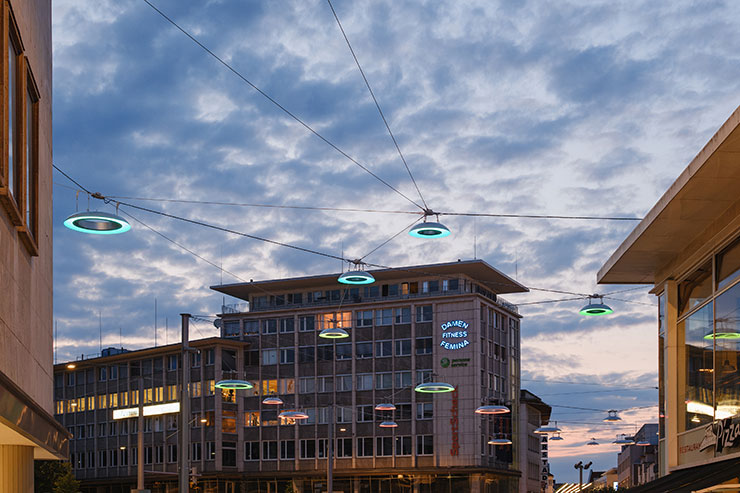This website uses cookies so that we can provide you with the best user experience possible. Cookie information is stored in your browser and performs functions such as recognising you when you return to our website and helping our team to understand which sections of the website you find most interesting and useful.
Night Suns - Jahnplatz Bielefeld, Germany
ProjectNight Suns - Jahnplatz Bielefeld, GermanyLocationBielefeld, GermanyLighting DesignEnvue Homburg Licht, GermanyAdditional DesignLandscape Architect: Kortemeier Brokmann Landschaftsarchitekten | Traffic planner: Bockermann Fritze Ingenieur ConsultClientStadt BielefeldLighting Suppliersewo, WE-EFPhotographyNikolai Benner
Jahnplatz is one of the central squares and an important junction in the urban structure of Bielefeld. As part of a mobility strategy adopted by the city of Bielefeld, the square was redesigned according to the guiding principle of “climate-friendly mobility”. According to the “Copenhagen model”, a balanced space should be offered for all road users.
With the high density of different road users, the new Jahnplatz traffic concept creates many conflict zones in which a differentiation in light levels is required in order to ensure traffic safety.
At the beginning of planning, the area was divided into different lighting zones and the necessary lighting quality features were put together in coordination with the city authorities and transport companies.
The following classification was made: lighting zone 01 – “pedestrians”, lighting zone 02 – “bus stop”, lighting zone 03 – “cycling traffic”, lighting zone 04 – “motorized traffic”.
In the further design process, the lighting design team intensively searched for solutions that had the potential to charge the functional traffic space in terms of design and atmospheric-emotional aspects, while visually highlighting and making the urban north-south axis between the new and old towns tangible. In the considerations and design studies, the development of a special luminaire as an object-like/decorative component of an overarching lighting concept then crystallized. It should have a high recognition value and thus contribute to the identity of the urban space. Both at night and during the day.
The ‘Night Suns’
In order to be able to create an appealing formal appearance even during the day and at the same time create an interesting lighting effect in interaction with the light of the sky, numerous shape and (day) light studies were necessary to find the final shape.
As a result, the side surfaces of the inner opening, which provides a view of the sky, as well as parts of the outer screen surface, have been designed to be shiny or slightly mirrored so that the different gradations of daylight can be reflected in them. Depending on the daylight situation, the season, the time of day and the weather as well as the viewer’s perspective, the lights appear in many different facets.
A total of 25 were built and installed at Jahnplatz. They now hover over the city’s central transport hub. Suspended from a cable system that is as complex as it is filigree. Each “night sun” is the result of a special craftsmanship process. The outer shell is made of multi-layer fiberglass that has been precisely painted to play with the daylight through reflections.
The focus for the artificial lighting technology and light sources was on efficiency, avoiding scattered light and the associated light pollution, connectivity and control (keyword: “smart city”) as well as high light quality and visual comfort. The shell is supported by an internal metal structure into which light sources with different symmetrical and asymmetrical light distributions are integrated.
With an intelligent control system based on DALI, connected via a Zhaga base, each light can be controlled individually. The central signal that controls all urban lighting has been integrated into the system. This unifies and simplifies the control considerably and enables energy monitoring.
The indirect light, the surrounding light ring, serves to improve visual comfort by generating a softly lit transition or adaptation zone between the dark night sky and functional light sources of higher luminance.
The indirect RGBW lighting of the fibreglass cover ensures the colourful and dynamic lighting of the Jahnplatz on important occasions, such as the Bielefeld Night Views, Christmas or the traditional local Leineweber Festival. The light colour for the functional light and the normal light scene was set to 3000 Kelvin in the entire planning area at Jahnplatz.
There are four basic types:
Basic type A: Ø 2100 mm. Direct and indirect light components.
Basic type B: Ø 2100 mm. Only indirect light component.
Basic type C: Ø 1300 mm. Direct and indirect light components.
Basic type D: Ø 1300 mm. Only indirect light component.
The sum of the luminaires gives the central urban square a finely tuned light depending on its usage zones. The indirect lighting of the ring-shaped structure creates a night image with identity at Bielefeld’s Jahnplatz: Floating rings of light bridge the urban axis between the new and old town!

